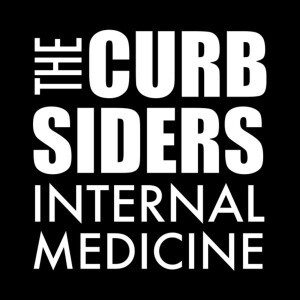

Hospital Malnutrition and Refeeding Syndrome: The Hospitalist’s Deep Dive into ASPEN, ESPEN, and NEJM Guidelines in the Hospitalized Patient
In this episode of Hospital Medicine Unplugged, we tackle hospital malnutrition and refeeding syndrome—screen early, feed smart, monitor relentlessly.
We start with the inpatient playbook: screen every adult at admission (MNA-SF, MUST, NRS-2002), then confirm with GLIM and document the diagnosis. Build an individualized nutrition plan: counseling + the right route—oral first (precision nutrition + fortified ONS), enteral if the gut works, parenteral if it doesn’t. Day-to-day targets: ~20–30 kcal/kg and 0.8–1.5 g/kg protein, adjusted to disease burden and goals. Inflammation may blunt reversibility, so treat the illness while you nourish the patient.
Then we zoom in on refeeding syndrome (RFS)—the metabolic ambush of insulin-driven phosphate, potassium, and magnesium shifts causing hypophosphatemia, edema, arrhythmias, and respiratory failure. Thiamine demand spikes; miss it and you risk Wernicke’s.
Risk-stratify up front (older adults, chronic disease, low BMI, big weight loss, minimal intake, alcohol use, low baseline phosphate/magnesium). For high/very-high risk, start low and go slow:
• Calories: ~10–20 kcal/kg/day or <50% of needs, advance over 4–7 days if labs/clinis allow.
• Thiamine: 100–300 mg/day IV or PO before and during refeeding.
• Electrolytes: aggressively replete phosphate, potassium, magnesium before and during feeding.
• Monitoring: daily labs in the first week; watch fluid status, cardiac rhythm, and respiratory function.
If RFS hits: pause or reduce calories/fluids, replete electrolytes + thiamine, and re-advance gradually over 4–7 days. Enteral preferred when feasible; apply the same caution if PN is required.
Where the evidence lands:
• Precision nutrition and energy/protein-fortified ONS improve outcomes in large trials.
• Most guidelines back cautious initial calories in severe malnutrition/critical illness, though select patients may tolerate a more assertive ramp with tight monitoring and supplementation.
• Daily energy/protein targets are a guide—not a cliff—trajectory and tolerance trump speed.
Bedside do-firsts you can deploy today:
• Order screening on admission → auto-consult dietetics for positives.
• Document malnutrition to unlock resources.
• Start thiamine before feeds in at-risk patients; add a standing electrolyte replacement protocol.
• Trend phosphate/K/Mg daily x 3–7 days; add telemetry or closer observation for the highest risk.
• Prefer enteral, avoid overfeeding, and coordinate with pharmacy for electrolyte/thiamine bundles.
• Educate and plan the handoff: discharge nutrition goals, supplements, follow-up labs, and red-flag symptoms.
Pearls & pitfalls:
• Don’t chase numbers while ignoring inflammation—treat the driver.
• Early steroids aren’t a refeeding fix; the fix is controlled calories + electrolytes + thiamine.
• Fluid creep kills—use conservative fluids during the first 72 hours.
• Collegial care wins—embed dietitians + pharmacists in the pathway.
We close with a hospitalist RFS bundle: (1) universal screening → GLIM confirmation; (2) thiamine first, then low-start calories with stepwise advance; (3) electrolyte protocol + daily labs; (4) enteral-first strategy; (5) clear hold/reduce criteria (falling phosphate, edema, arrhythmia, rising CO₂); (6) written discharge nutrition plan.
Screen everyone, feed deliberately, and never refeed alone—bring the team.
More Episodes
All Episodes>>You may also like
Create Your Podcast In Minutes
- Full-featured podcast site
- Unlimited storage and bandwidth
- Comprehensive podcast stats
- Distribute to Apple Podcasts, Spotify, and more
- Make money with your podcast












